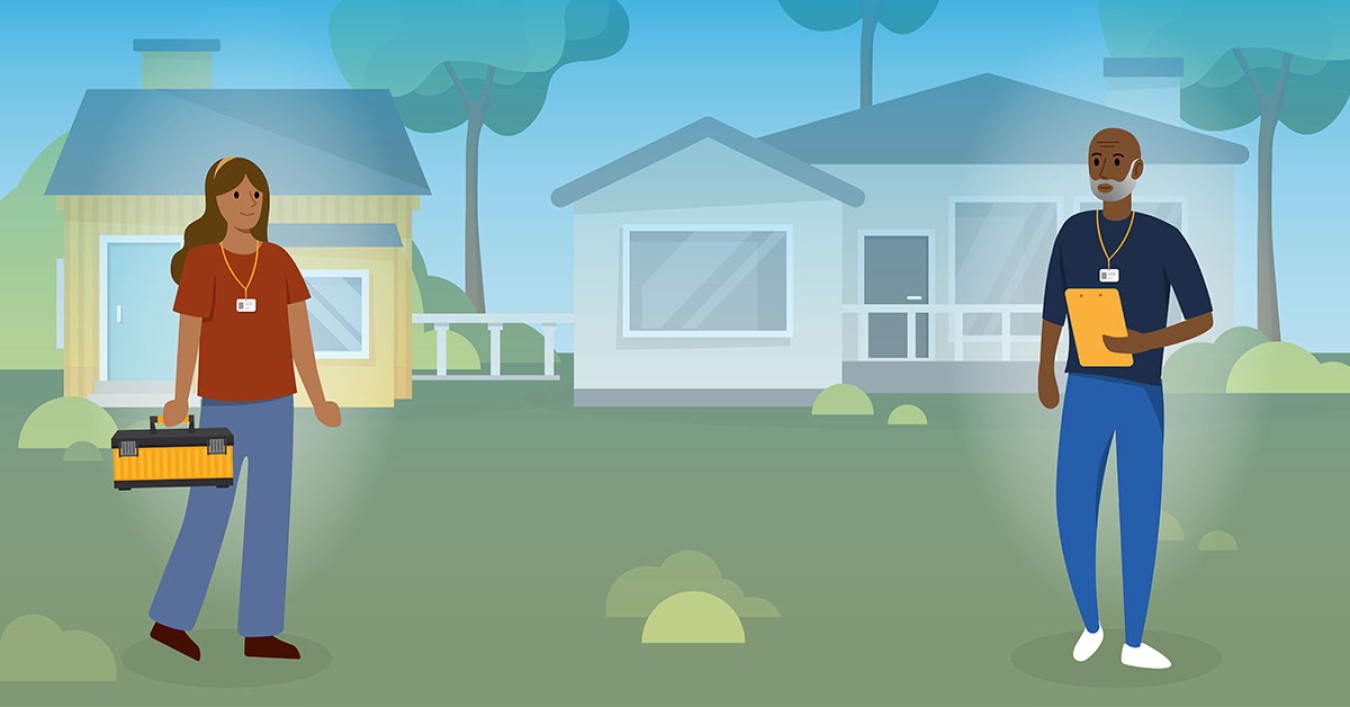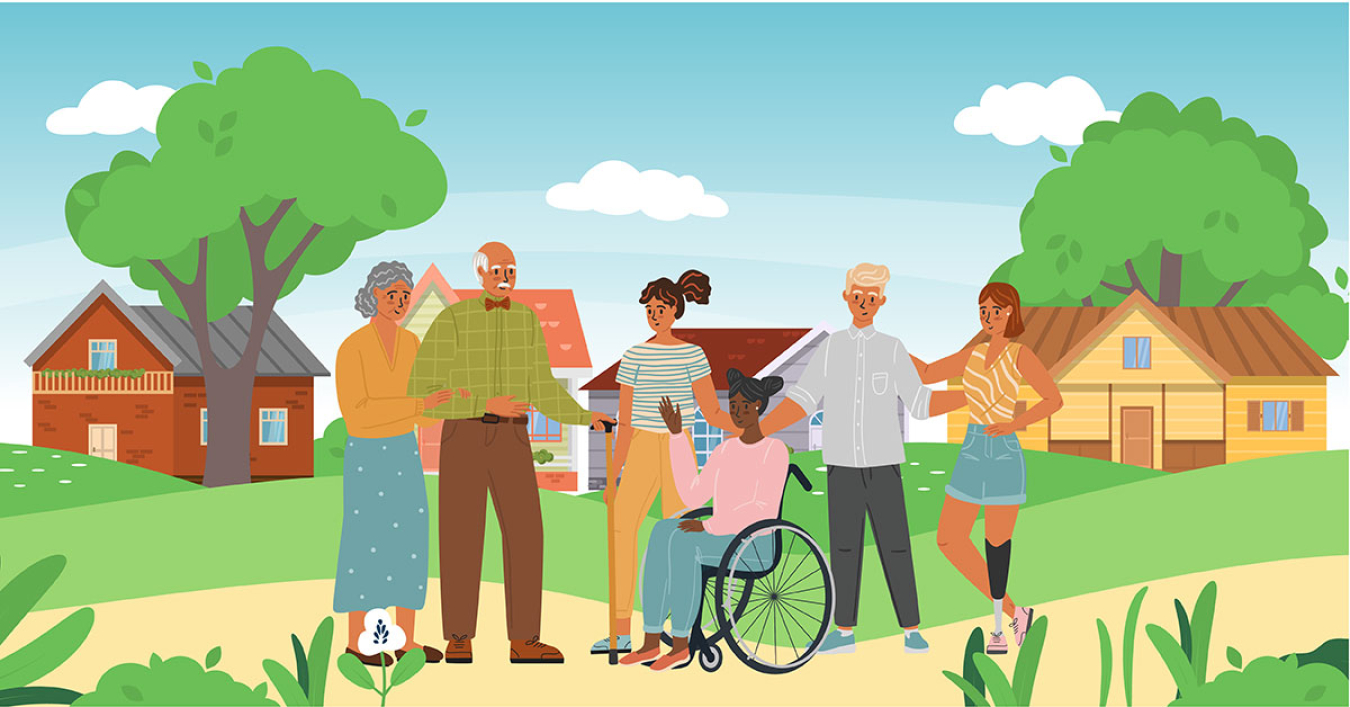Since 2015, Iowa has received $49.5 million from the Weatherization Assistance Program (WAP) and $6.4 million from the State Energy Program (SEP), resulting in the following benefits:

4,455 Homes Weatherized
Iowa reduced energy costs and improved health and safety in 4,455 homes.*

516 Jobs Created or Retained
The State Energy Program creates or retains one job for every $12,500 invested.*

Connected with 2,588 People About Energy Efficiency Installations
Iowa held 129 workshops, webinars, trainings, or outreach events since 2015.*
* Findings from a National Evaluation of the State Energy Program and a National Evaluation of the Weatherization Assistance Program.
States report outcomes of State Energy Program and Weatherization Assistance Program formula (annual) fund activities to DOE on a quarterly basis. The metrics above are outcomes of formula-funded activities since 2015.
The SCEP Project Map highlights the annual formula and competitive funding for WAP and SEP.
Iowa's State Energy Program at Work
Iowa Energy Plan
The state energy plan includes 15 objectives and 45 strategies to encourage growth in all of Iowa's energy sectors while emphasizing sustainable practices, economic development throughout the state, and support for research and development required to reach Iowa's goal of being on the leading edge of energy innovation.
The Iowa Energy Plan serves as the foundation of Iowa's efforts to maximize and realize economic potential, leverage past energy success, and lay the groundwork necessary to reaffirm Iowa's energy leadership into the future. Implementation of the energy plan's strategies has produced numerous policy initiatives and it has sparked project development by a diverse mix of Iowa stakeholders.
An outcome of the plan is the completion of the Iowa Anaerobic Digester (AD) Resource Guide, released in May 2021. The guide provides an overview of anaerobic digester project development and presents the technological, economic, and regulatory considerations that affect the feasibility and success of AD projects in Iowa.
Carbon Sequestration Task Force
The Governor’s Office convened a 20-member Carbon Task Force in August 2021 to explore carbon management and the opportunities it presents. The energy team at IEDA and staff from the Iowa Department of Agriculture and Land Stewardship coordinated the effort. Two workgroups, one focused on energy and the other on agriculture, helped shape the five strategies resulting from the effort. The strategies and proposed initiatives will deliver supplementary revenue streams for Iowa’s agriculture, energy and renewable fuel producers; add value to the state’s rich natural resources; bolster sustainability achievements by producers, research institutions and industries; and also enhance public-private collaboration and innovation. The Governor’s Carbon Sequestration Task Force Report outlines the findings from this collaborative effort.
To provide a baseline analysis for developing carbon strategies, Iowa State University simultaneously completed a science assessment. The findings of this study are detailed in Carbon Science for Carbon Markets: Emerging Opportunities in Iowa. The report addresses ways to further improve the credibility of agricultural carbon credits and reduce the cost of carbon programs by assessing the underlying science and adding transparency to how carbon markets function. The research includes:
- The history and structure of carbon markets and carbon credit measurement, reporting, and verification protocols
- The impact of land (especially cropland) and livestock management practices on greenhouse gas and soil organic carbon dynamics
- Existing and emerging engineering technologies that could reduce greenhouse gas emissions or enhance carbon removal
- Quantitative tools that could help facilitate carbon market development
- Opportunities for multisectoral collaborations between farmers, scientists, industry, government, and civil society organizations that could remove barriers and further market development
Report of Hydrogen Potential
An analysis to assess the renewable hydrogen possibilities in Iowa and the potential impacts on the economy and employment was released in April 2022. Iowa's renewable and natural resources place the state in a unique position to be a part of a new national hydrogen market. Renewable-H2-in-Iowa-Second-Edition-Digital.pdf (idealenergysolar.com)
Iowa Wastewater and Waste to Energy Research Program
The Iowa Wastewater and Waste to Energy Research Program (IWWERP) was established through a grant to the University of Iowa to hasten solutions for rural Iowa communities where municipal wastewater treatment costs stifle local economic vitality. The IWWERP also serves large municipal water resource recovery facilities that are increasingly leveraging organic waste streams from Iowa’s industrial and agricultural supply chains to capture nutrients, grow biobased chemicals and specialty products, and generate renewable natural gas. Industry-university partnerships between the IWWERP and wastewater treatment technology and bioscience companies in Iowa take advantage of unique organic waste streams, expertise, knowledge, resources, and infrastructure to expand Iowa’s economy while protecting and improving Iowa’s natural environment.
Learn more about SEP competitively awarded projects.
Learn more about SEP Implementation Models.
Iowa's Weatherization Assistance Program at Work
The Iowa Department of Health and Human Services, Community Access Division, Community Action Agencies Unit, is the managing agency for Iowa's Weatherization Assistance Program. The Iowa WAP contracts with local community action agencies and nonprofits to install weatherization improvements in low-income households throughout the state.
Between 2010 and 2021, Iowa weatherized an average of 508 homes per year with formula funds.
Success Stories
Read other SCEP News and Success Stories.
Iowa Takes Initiative
Better Buildings Initiative
More than 900 organizations are involved in the Better Buildings Initiative working to reduce energy and water waste and modernize the nation’s buildings and industrial facilities. Download the 2023 Better Buildings Progress Report for more information on the Initiative as a whole.
Better Buildings Accelerators
In the past five years, SCEP has engaged nearly 100 partners in Better Buildings Accelerators. These Accelerators are designed to demonstrate specific innovative policies and approaches, which will accelerate investment in energy efficiency upon successful demonstration. Each Accelerator is a targeted, short-term, partner-focused activity designed to address persistent barriers that stand in the way of greater efficiency.
To learn more about other Better Buildings partners and solutions in the state of California and other states involved in the Better Buildings Initiative, check out the Better Buildings Partner map.
Sustainable Wastewater of the Future (SWIFt) Initiative
Cedar Rapids and Charles City committed to improving the energy efficiency of their participating water resource recovery facilities as part of the Sustainable Wastewater Infrastructure of the Future (SWIFt) Initiative Phase 2. SWIFt Phase 2 is engaging wastewater treatment facilities in a voluntarily partnership to achieve 5% short-term and 25% long-term facility-wide energy savings and implement at least one next-generation technology (e.g., renewable energy, resource recovery, and advanced data management). SWIFt Phase 1 hosted 25 state, regional, and local agencies that engaged with more than 70 water resource recovery facilities in their jurisdictions and successfully reduced their total energy consumption by almost 7%, adopted best-practice energy management approaches now showcased in the Wastewater Energy Management Toolkit, and created plans to achieve 30% energy savings.
Publications, Resources, Helpful Links
- State and Local Solution Center, a one-stop shop of impactful public-sector resources
- Weatherization Assistance Program
- State Energy Program
- NASEO State Energy Office Contact
- Contact State Weatherization Agency
- Iowa Implementation Model: Advancing Energy Efficiency through the Iowa Benchmarking Project
- Iowa Economic Development Authority
- Iowa Energy Plan
- EIA Iowa State Profile and Energy Estimates
- Advancing Energy Efficiency in States: State of Iowa Implementation Model
